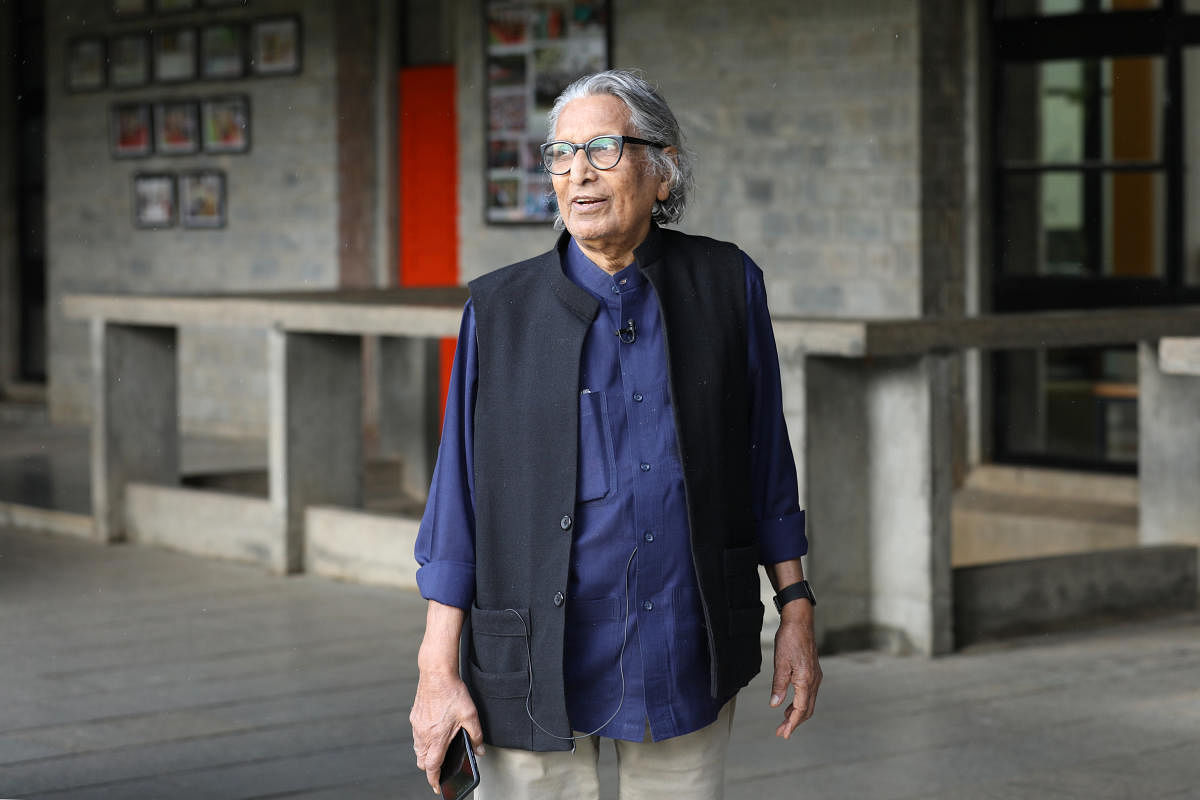
The Indian Institute of Management in Bengaluru celebrated its 46th Foundation on Monday, and unveiled a plaque in honour of its architect Dr Balkrishna Doshi. The legendary Doshi has worked closely with master architects such as Le Corbusier and Louis Kahn. His iconic design for the IIM-B campus is hailed across the world.
During his visit to Bengaluru, Doshi, 92, delivered a lecture titled ‘Between Encounters and Dreams’ at IIM-B.
The Padma Shri awardee and Pritzker Laureate has been instrumental in establishing the Vastu Shilpa Foundation for research in environmental design. The foundation has done pioneering work in low-cost housing and city planning. Metrolife caught up with him for a chat just before the celebrations.
Why do you think Bengaluru has not been able to retain its architectural charm?
Very simply, we are charmed by other cultures and technology and pursue personal interests. We don’t want to bother about environment or society. It is not just in Bengaluru but all over. When you use technology and tools, the personal rapport is reducing. When everybody is busy in their own world, then naturally the real world is not there. How many hours of the day we are using mobile phones and other technology... we really have no time to chat. We don’t talk casually. A few years ago, we would meet friends and talk about things we felt were important to us and then you carried the conversation home. But today, that world doesn’t exist. We have now found alternatives which may be technology and not human and that has become an essential part of our lives. The human values and concerns, ecological concerns, where are they? All the time we are busy.
What are your suggestions to make Bengaluru a better place in an architectural sense?
Why just architecturally, I think it should overall be a better place! How do we improve ourselves if we cut the trees, if we take the foliage, if we don’t go to the gardens and if we don’t have the time to reflect on our natural wealth but widen the roads and move around in cars? In fact, we have never taught people from childhood the real meaning of virtues like togetherness, or ponder over something that is nourishing. Why do people still go to temples? Because it is where they think there is some connection. Now we go to the temple, but our mind is not there. The trees are cut, roads are widened and landscapes are changed; are we gaining anything or losing?
Karnataka has a record of great architecture, right from Badami to Belur – with temples that are beautifully structured. Why didn’t this sense of architecture come down to ordinary folks? Why do you think our cities and homes are so miserably designed?
When we look at a temple, it is the intangible, an inner calling that we look at. One tries to connect from the inside. Now there is a disconnect. Today, we have become materialistic and technologically oriented. Technology has taken over our spiritual content – the intangible one – where there was reverence, inquiry and an attitude to do things. What is our focus today, what are we searching for and what would it be that would make us the happiest? These are things we don’t want to ask now. We want to do greater and faster production but what about our villages and towns that are gradually shrinking? Ecologically, the natural resources also have depleted, where is the place to remain ourselves? We think it is progress but we are forgetting that progress is connected to something higher and not just restricted to material progress. This is a major problem in planning and architecture.
Which city do you think is architecturally the most pleasing?
Well, the cities in the south are better. Of course, Varanasi is there, but that’s also dying. I did a project there, so I visited it often. Suddenly, there is a wedding procession and the public is still; then after some time, in some other place, the procession of a dead body is making its way and people stop and give way. I have always wondered how Varanasi never had a problem. That city has an underlying meaning to it.
His design vision for IIM-B
‘One of the things that I tried to do at IIM-B was to reverse the order. The IIM campus talks about nature, leisure, casual walks and one’s relationship with nature and the cosmos all the time.’
Quick takes
On what cities are losing: One of the essentials we had was the gift of intuition, thinking about reverence, togetherness, humility and concern for others... I don’t think they are there anymore.
On being celebrated in films like ‘Ok Kanmani’: That was by chance (laughs). It was Mani Ratnam who did this and it had nothing to do with me. The more time passes the more reflective you become, so I wonder.
But what I try to do is to find a way to look at time as one of the major elements and energy as another. So, if I can find a way to fuse time and energy and look at production as a meaningful thing, then those projects become important. So, everywhere, I would like to save, recycle, readjust.